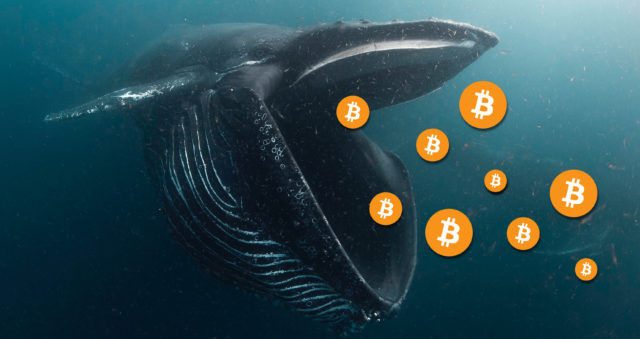SpaceX and NASA launched a team of astronauts from around the world on a trip to the International Space Station. The mission, which includes some historic firsts, moved forward even as geopolitical tensions on the ground mount.
The four crew members – NASA astronauts Nicole Mann and Josh Cassada, Japan Aerospace Exploration Agency astronaut Koichi Wakata, and Roscosmos cosmonaut Anna Kikina – are aboard the SpaceX Crew Dragon spacecraft, which launched at 1 pm on Wednesday. Friday (5) from the Kennedy Space Center in Florida.
Dubbed Crew-5, the mission is the sixth astronaut flight launched as a joint effort between NASA and SpaceX, a private aerospace company, to the space station. The upcoming spaceflight marks a historic moment, as Mann will not only become the first Native American woman to travel into space. She will also serve as mission commander, becoming the first woman to assume that role for a SpaceX mission.
Additionally, Kikina will be the first Russian to join a SpaceX mission as part of a ride-sharing agreement that NASA and Russian space agency Roscosmos signed in July. Its participation in the flight is the latest clear sign that despite rising tensions over Russia’s invasion of Ukraine, the decades-long US-Russia partnership in space will persist — at least for now.
After launch, the Crew Dragon spacecraft will separate from the SpaceX rocket propelling it into orbit and begin a slow, precise journey to the ISS, which orbits about 200 miles (322 kilometers) above Earth’s surface. The spacecraft intends to dock with the space station on Thursday around 6 pm.
What’s notable about this flight?
Launching NASA astronauts to the space station aboard a SpaceX Crew Dragon spacecraft is nothing new. The space agency collaborated with SpaceX for years to transition the task of transporting people to and from the space station after NASA retired its space shuttle program in 2011.
With the return of astronaut launches to American soil, SpaceX has provided a stage for several historic firsts. The Crew-4 Dragon mission, for example, led to NASA astronaut Jessica Watkins, the first black woman to join the Station’s crew.
On this flight, Mann, a registered member of the Round Valley Reservation’s Wailacki tribe, will become the first Native American woman to travel into orbit. “I am very proud to represent Native Americans and my heritage,” said Mann.
“I think it’s important to celebrate our diversity and also realize how important it is when we collaborate and come together, the incredible achievements we can have,” he added.
In his role as commander, Mann will be responsible for ensuring the spacecraft is on track from the moment it launches until it docks with the International Space Station and again when it returns home with the four Crew-5 astronauts next year. Never before has a woman held the position of commander on a SpaceX mission, although some women have served in that position during the Space Shuttle Program.
Kikina, the Roscosmos cosmonaut, will become the first Russian to be launched in a SpaceX vehicle at a time when US-Russia relations are reaching the height of the war in Ukraine. But NASA officials have repeatedly said that joint operations with Russia on the International Space Station, where the two countries are the main operators, will remain isolated from the fray.
O Kikina’s flight comes just weeks after Dr. Frank Rubio of Nsa was launched to the Station aboard a Roscosmos Soyuz capsule. “I really love my crewmates,” Kikina told reporters after she arrived at the Florida launch site on Saturday.
“I really feel good, comfortable… We will do our job in the best way: happy.”
Who are the other astronauts on board?
Mann and fellow NASA astronaut Josh Cassada, who grew up in White Bear Lake, Minnesota, joined NASA in 2013. Cassada described Mann as one of his “closest friends on the planet.” As with Mann, this mission will be the first trip to space for Cassada and Kikina.
For veteran astronaut Wakata, who has flown both NASA’s space shuttle and Russia’s Soyuz spacecraft, this trip marks his fifth spaceflight mission. “I still remember when I first flew and saw our beautiful home planet,” he recalled during an August press conference. “It was so wonderful, such a beautiful planet, so I felt very lucky to be able to call this planet our home.”
What will they do in space?
After arriving at the Station, the crew will join the seven astronauts already on board – including four NASA astronauts, one European Space Agency astronaut and two Russian cosmonauts.
There will be a delivery period where the Station’s current crew will help the newly arrived astronauts settle in before a separate Crew Dragon spacecraft brings the four astronauts who were part of SpaceX’s Crew-4 mission back home.
Next, Crew-5 astronauts will begin work performing spacewalks, during which astronauts leave the ISS, to maintain the exterior of the space station, as well as performing more than 200 science experiments.
“Experiments will include studies on imprinting human organs in space, understanding the fuel systems operating on the Moon, and better understanding heart disease,” according to NASA.
Crew-5 is scheduled to return from space in about five months.
Source: CNN Brasil
I’m James Harper, a highly experienced and accomplished news writer for World Stock Market. I have been writing in the Politics section of the website for over five years, providing readers with up-to-date and insightful information about current events in politics. My work is widely read and respected by many industry professionals as well as laymen.






